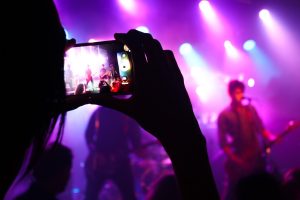Approaching audiences
Audiences have been “of interest” to researchers for a long time. This long history of audience research has laid the foundations for work undertaken today by professionals in various fields – advertisers, digital marketers, campaigners, content creators of all kinds, as well as academics and scholars. Many who come to the study and/or practice of communication find audiences the most fascinating aspect of the discipline: they are the human part of communication, which makes them interesting but also volatile, challenging, and complex.
Looking at the history of audience studies, the media theorist Sonia Livingstone (2018) identifies a sort of conceptual tug-of-war between two points of focus: media power, and audience agency. The emphasis, she argues, has changed over time. In the first half of the 20th century, during times of war and propaganda, audiences were depicted as vulnerable and audience research was driven by concerns about the misuse of media by powerful forces. The balance began to shift in the second half of the 20th century, when audiences became of interest to communication researchers for the ways they actively used and responded to media messages.
So what about today? Audiences are more important and fascinating than ever before, and audience-based research is flourishing. But today, Livingstone argues, the balance has shifted somewhat and media power is once again of concern, often at the expense of a focus on real people-as-audiences.
In particular, concerns about misinformation (which we’ll look at in Chapter 8) have led to renewed worries that audiences are vulnerable and easily manipulated. Changing media ownership patterns and the rise of “big tech” and media conglomerates have led to renewed explorations of media power – and not surprisingly: if most media content is owned and controlled by a handful of global companies, why should we not be worried about the ability of these owners to set the agenda and influence public opinion? The rise of big data, in turn, has led to a focus on the digital traces that audiences leave behind, rather than their everyday lives and practices – this is one of the core observations Livingstone makes in her paper.
So: a word of caution as we begin this chapter. Audience studies is fraught with tension and riddled with complexities. Indeed, writing a chapter on “audiences” makes me feel like I’m stepping into a crowded room where many voices are conversing loudly, and I’ve been tasked with giving a thorough account of everything that is currently being said and has ever been said in this impossible room.

Image by Gabiel Doti from Pixabay
All topics with rich and complex academic histories can be difficult to distil and explain clearly. But audiences are different. They are different because nearly everyone is interested in audiences. That is to say, audiences matter to nearly everyone. And because nearly everyone is interested in audiences, the perspectives on what it means to be an audience (and what it means to successfully reach and engage one) are almost endless.
In other words, audiences themselves are a site of struggle over what it means to communicate well. And they always have been. Across history, audiences have been the subject of deep thinking about the impacts and processes of communication, and the meaning of “audience” has been fought over by stakeholders with diverse, competing agendas.
In this chapter, we’ll untangle some of this complexity and explore different ways of looking at, thinking about, and working with audiences. We’ll consider what audiences mean, and to who, at the intersection of communication theory and practice. We’ll take something of a journey through cultural studies, the encoding/decoding model, and diverse practices of decoding in the digital age. But we’ll start in an unexpected place…
In this chapter…
Defining and measuring audiences
Case study – algorithmic news consumption
Case study – my transformative journey as a news consumer
To continue reading Chapter 3, click “Next” in the bottom right corner or follow this link.

